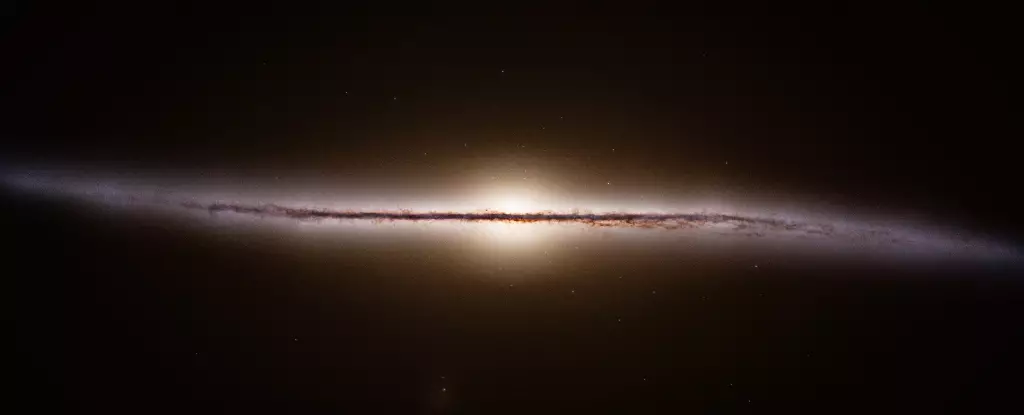The scientific community’s ability to reshape its understanding of the cosmos is a testament to the innovative spirit driving research. The European Space Agency’s (ESA) Gaia mission exemplifies this spirit, offering a profound transformation in how we view our own galaxy, the Milky Way. By constructing a comprehensive, three-dimensional map of our galactic neighborhood, Gaia has discarded outdated notions and presented us with a clearer, more detailed representation of our cosmic home.
Launched in 2013, Gaia was primarily designed for astrometry—the measurement of distances and movements of celestial bodies. Over the course of its mission, Gaia performed over three trillion observations, meticulously cataloging nearly two billion stars and shedding light on their respective movements over an extensive 11-year period. The precision of these measurements has provided astronomers with an unparalleled understanding of not just the positions of stars, but also their motions, thereby revealing the dynamic nature of the Milky Way rather than presenting it as a static entity.
To fully appreciate Gaia’s contributions, it’s essential to consider the history of galactic mapping. The early efforts of astronomers, particularly in the mid-20th century, laid the groundwork for contemporary understanding. Following the advent of radio astronomy in the 1950s, significant advancements in understanding the structure of the Milky Way began to emerge. Astronomers conducted the first major radio survey that identified the spiral arms of the galaxy, suggesting a more complex structure than previously thought. Further developments, such as the use of variable stars like RR Lyrae and Cepheids as standard candles, enabled astronomers to calculate distances within the galaxy, gradually piecing together its architecture.
Notably, the ESA’s Hipparcos mission, which operated from 1989 to 1993, marked a significant milestone in astrometry, measuring the positions and motions of about 100,000 stars. Despite its achievements, Hipparcos was limited in scope and precision when compared to its successor, Gaia. Therein lies the crux of Gaia’s success—it transcended these limitations, capturing an expansive dataset that prompted a revolutionary shift in our comprehension of the Milky Way.
Gaia’s wealth of data has not only advanced scientific knowledge but has also energized artistic interpretation. Artists have utilized the rich information provided by Gaia to create visual representations of our galaxy that are both mesmerizing and scientifically grounded. These works convey not only the physical structure of the Milky Way but also its dynamic, living essence.
For instance, new insights gleaned from Gaia have revealed previously unnoticed elements, like the lighter-than-expected prominence of the spiral arms and the complex nature of galactic filamentary structures. Such findings enrich our understanding of galactic evolution and past interactions with other celestial bodies, signaling a once-complex history that is now beginning to emerge more clearly.
Understanding Motion and Galactic Evolution
One of Gaia’s major contributions has been the emphasis on the motion of stars, enabling researchers to trace the galactic history in a way that was not possible before. The mission uncovered a slight wave in the galactic disk, theorized to be a result of interactions with the Sagittarius Dwarf Spheroidal galaxy. This kind of detailed information fosters greater clarity regarding the Milky Way’s evolution, letting scientists assemble a timeline that documents past gravitational encounters with other structures in the universe.
With everyday observations, researchers can gain insights into how these interactions shape the stellar landscape of our galaxy. This knowledge not only speaks to the past of our Milky Way but also helps infer potential future developments as external forces continue to influence our galaxy’s structure.
The Future Beyond Gaia: Anticipating Further Discoveries
While the Gaia mission has reached its conclusion, the door remains open for continued exploration and discovery. The final data release, expected by the end of 2030, will likely yield even more surprising revelations about our galaxy. As we eagerly await this treasure trove of insights, Gaia stands as a testament to the relentless pursuit of knowledge, showcasing how one mission can catalyze a paradigm shift in our understanding of the universe.
The legacy of the Gaia mission transcends its operational timeline. It has not only redefined our comprehension of the Milky Way but has also inspired a sense of wonder about our place within the cosmos. The mission serves as a reminder of the value of perseverance and innovation in scientific inquiry, pushing the boundaries of what we know and how we visualize our galaxy. The exploration of the Milky Way continues, and with each revelation, we edge closer to comprehending the complexities of our universe.


Leave a Reply